By Dan Weisz
Between August 5th, a Wednesday, and August 10th, a Monday, I happened to see three different species of Owls. I really didn’t go looking for them but it was interesting to come across them. The species were Western Screech Owl, Great Horned Owl, and Burrowing Owl- 3 species in 6 days! In the Foothills we have Western Screech Owls and Great Horned Owls. We do not have Burrowing Owls in this habitat.
One morning, August 5, I stepped onto my back porch and heard several small birds chattering. I looked into the mesquite tree to see what was causing the commotion and saw that a Western Screech Owl was perched on a branch. It looked a little perturbed, but these owls often do. This was likely the local male Western Screech Owl. I could see he was losing one of his large feathers too, so perhaps that look is because I caught him with ‘feathers’ down. How embarrassing for him! After taking the picture I walked back in the house and when I went back outside 15 minutes later he was gone.
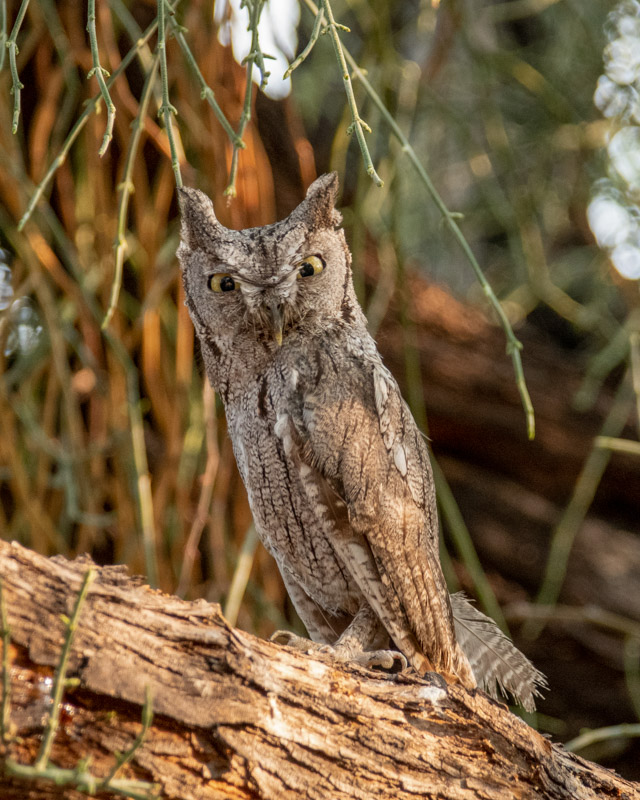
On Monday, August 8th, I got a message from someone a few neighborhoods over letting me know they had a pair of Great Horned Owls in their yard. They graciously invited me over to take a look and the owls took a look at me. Thank you Pat Leahy and Matt for the kind gesture. It was nice meeting you and “your” owls!
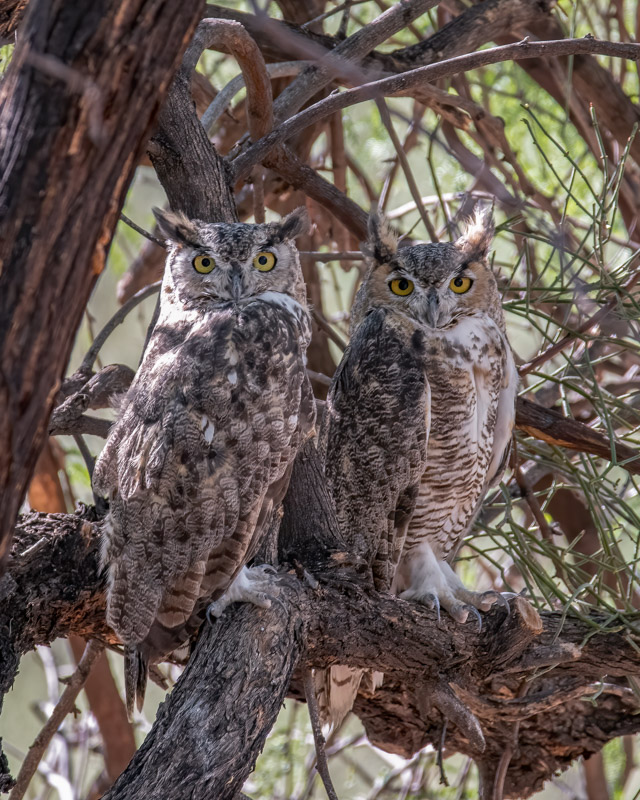
The owls look regal and the morning sun was behind them. Then, the owl on the left flew off down the thickly vegetated desert wash.
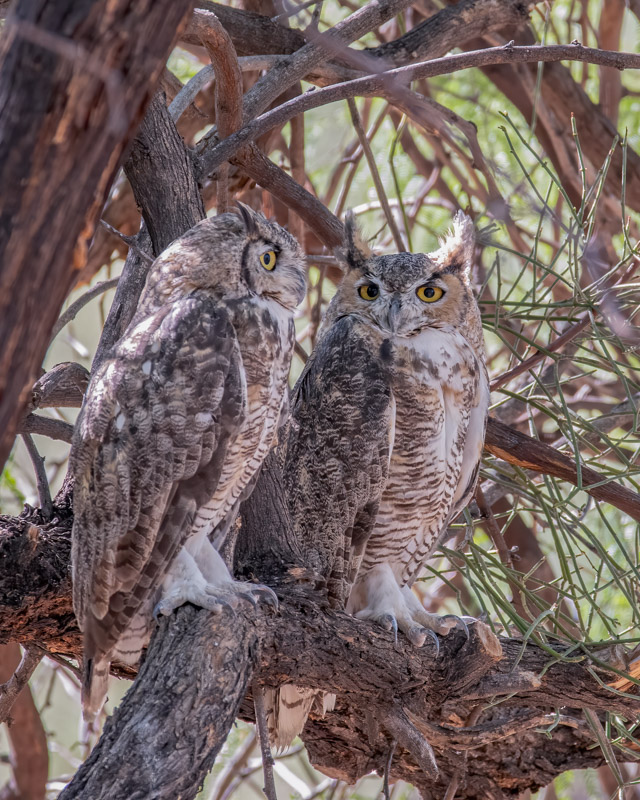
The remaining owl stuck around for a while and probably was trying to figure out what I was. Check out the owl’s long talons and its feathered feet.
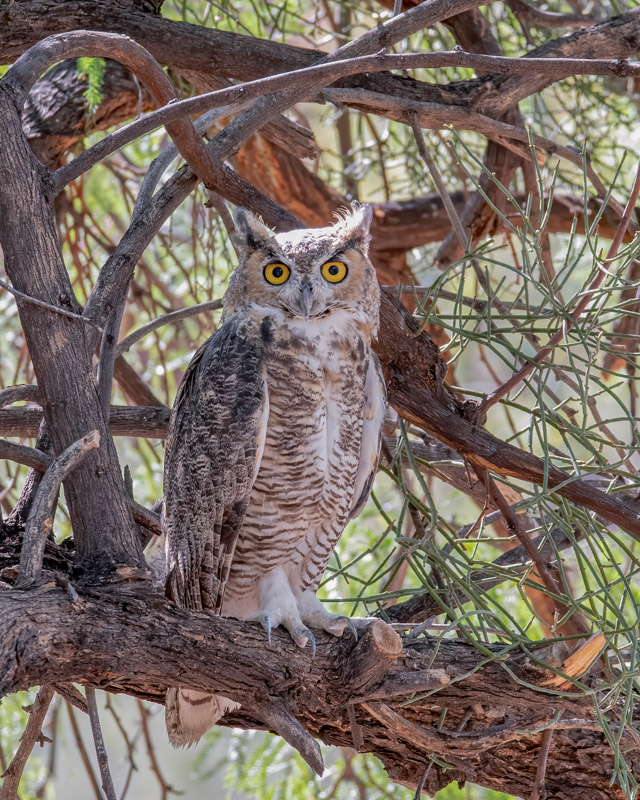
Those thickly feathered feet could be to help keep them warm while flying in the nighttime. It might be to help cut down noise when they fly, so the ‘wind’ won’t make any noise on their feet. But it likely is a form of protection. When a Great Horned Owl catches prey, that prey may fight back, fighting for its life. It may scratch or bite. Those feathers would act as gloves, serving to protect the owl’s feet in that scenario.
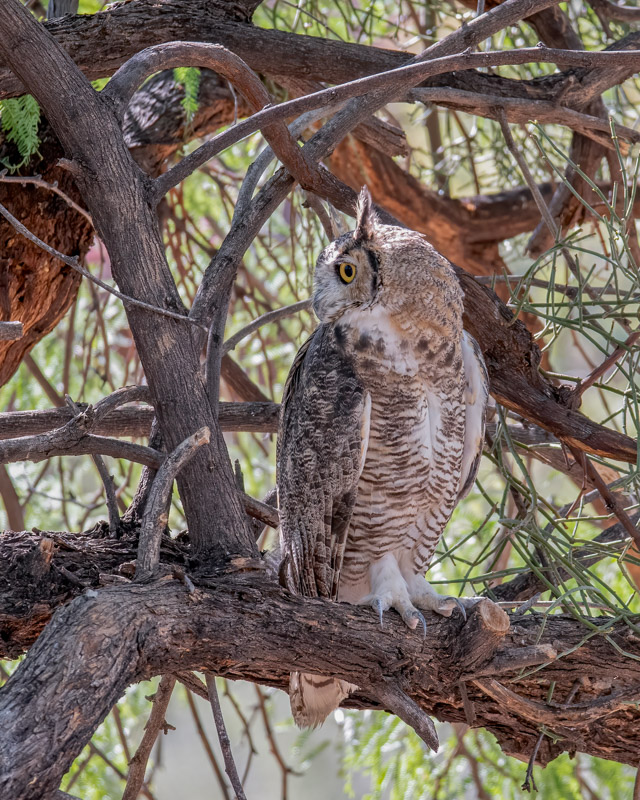
The owl leaned forward a bit and appeared to be getting ready to fly. And then fly it did, heading down the wash after its partner.
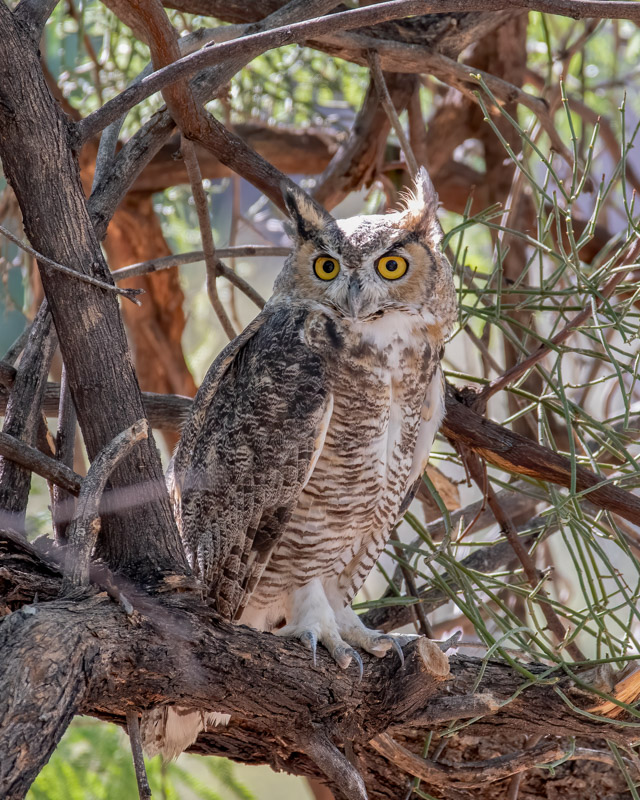
(As always, if you would like me to photograph your “backyard” owls, bobcats, or other special wildlife, PM me on Nextdoor or write me at dan@weisz.org )
On Monday, August 10th, I ran down to the Santa Cruz Flats- the extensive agricultural area north of Marana. Although I knew it was going to be extremely hot, I was hoping to see some of the Swainson’s Hawks that are beginning their migration from the US down to Argentina. I’ll share more of that in another email, but another of the regular birds to see in the Flats are Burrowing Owls. I found some families in one stretch of road including this one owl who was standing watch from atop of a Silverleaf Nightshade plant. This plant is a widespread non-native species. It is a beautiful plant with silvery leaves, lavender flowers that bloom from spring through summer, and small round berries that turn yellow and remain on the plant through the winter. In the photo below, notice how the Burrowing Owl’s pupils are different sizes. The one in the direct sunlight is smaller than the one on the shaded side of its face.

Like many members of the nightshade family, the Silverleaf Nightshade is highly toxic.
I was shooting these photos from inside my car and I moved up the road just a little bit but enough so the background behind the owl changed. The agricultural lake, the blue seen in the photo above, turned to brown fields in the photo below. When the Burrowing Owl turned sideways, I could see a red stain around its mouth from the last meal it had eaten.
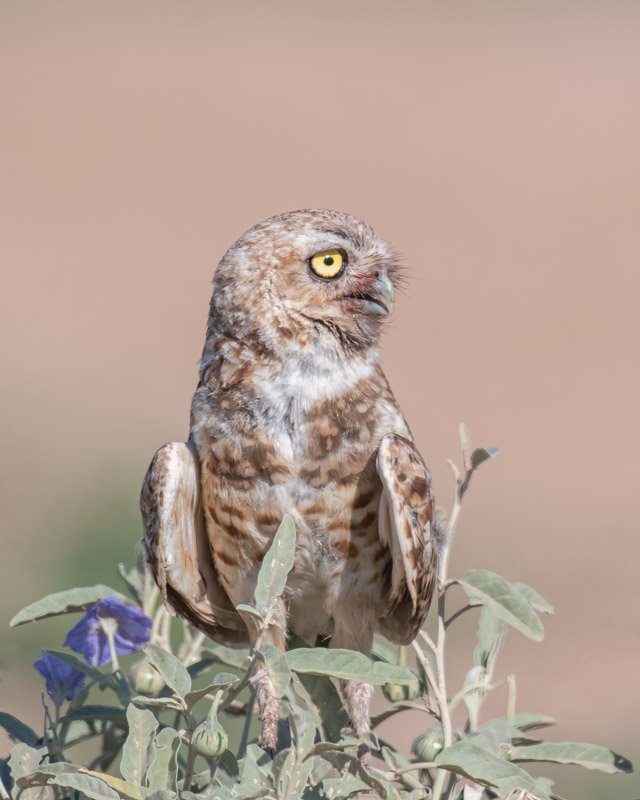
Just beyond this Burrowing Owl, another Burrowing Owl was sitting on the mud. Although its back is to me, I liked seeing the contrast of this bird’s white feathery head. This might be a male because of all of the white in its head. It is thought that the male Burrowing Owl may have lighter feathers that were bleached by the sun because the owl spent more time outside hunting than his partner did while she was tending to the eggs and young deep inside the underground burrow.
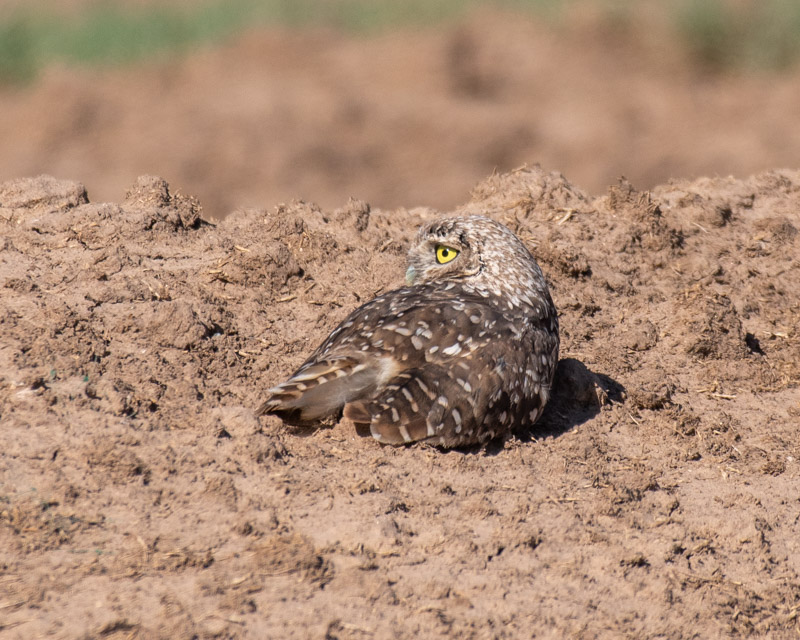
Perhaps 50 yards away, another Burrowing Owl family lived. This one was standing on the irrigation canal with green farm fields beyond it. You can see how the owl’s brows provided some shade from the morning sun, much as a visor would do. Burrowing Owls have white eyebrows and a lemony colored iris.
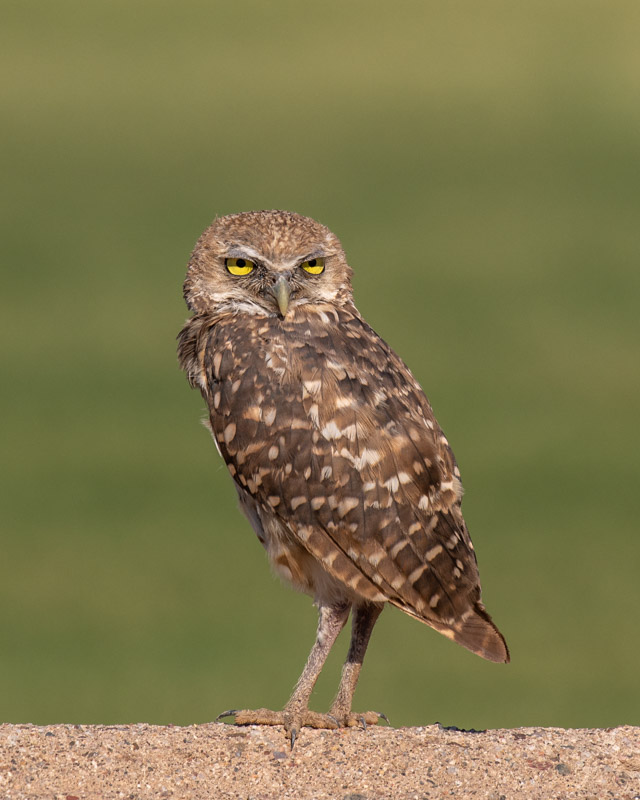
A small, long-legged bird, Burrowing Owls measure about 8-9 inches from head to tail and weigh only about 5-6 ounces.
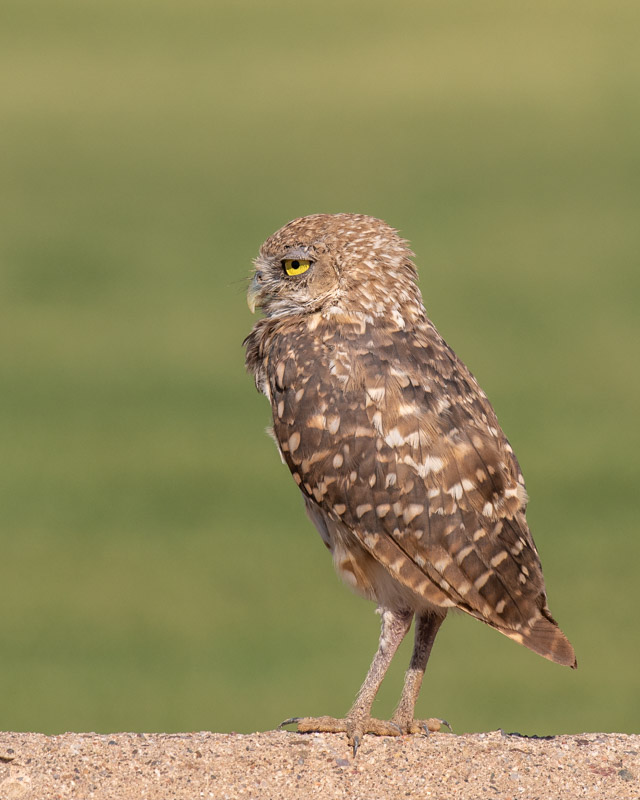
On the way home I swung by the agricultural fields in Marana to check out a family I know of there. Some youngsters were out but were smart enough to not hang out in the late morning sun. Something special must have been in the air above us but one of the owls didn’t seem to be paying attention. There’s always one in the crowd.
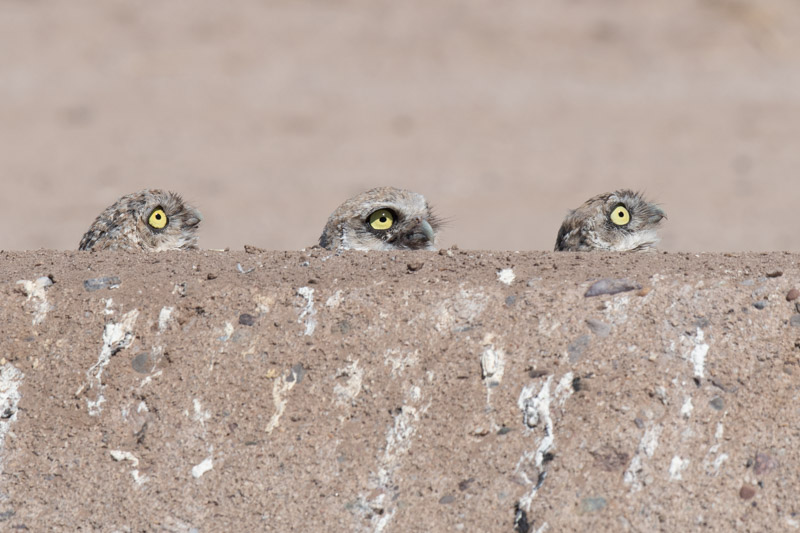
Matt Sewell, the author of “Owls: Our Most Enchanting Bird” said “To be honest, owls aren’t the brightest of birds, amazing as they are; parrots and crows are much smarter. It’s all in the eyes: those magnificent piercing optics are what make all owls look like they are deep in concentrated scrutiny and steeped in long-lost knowledge.”
It’s all in the eyes!!!
